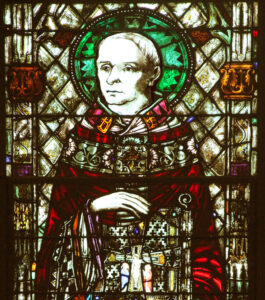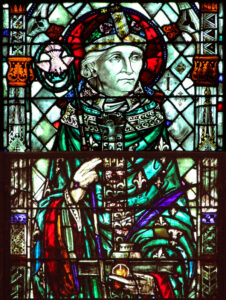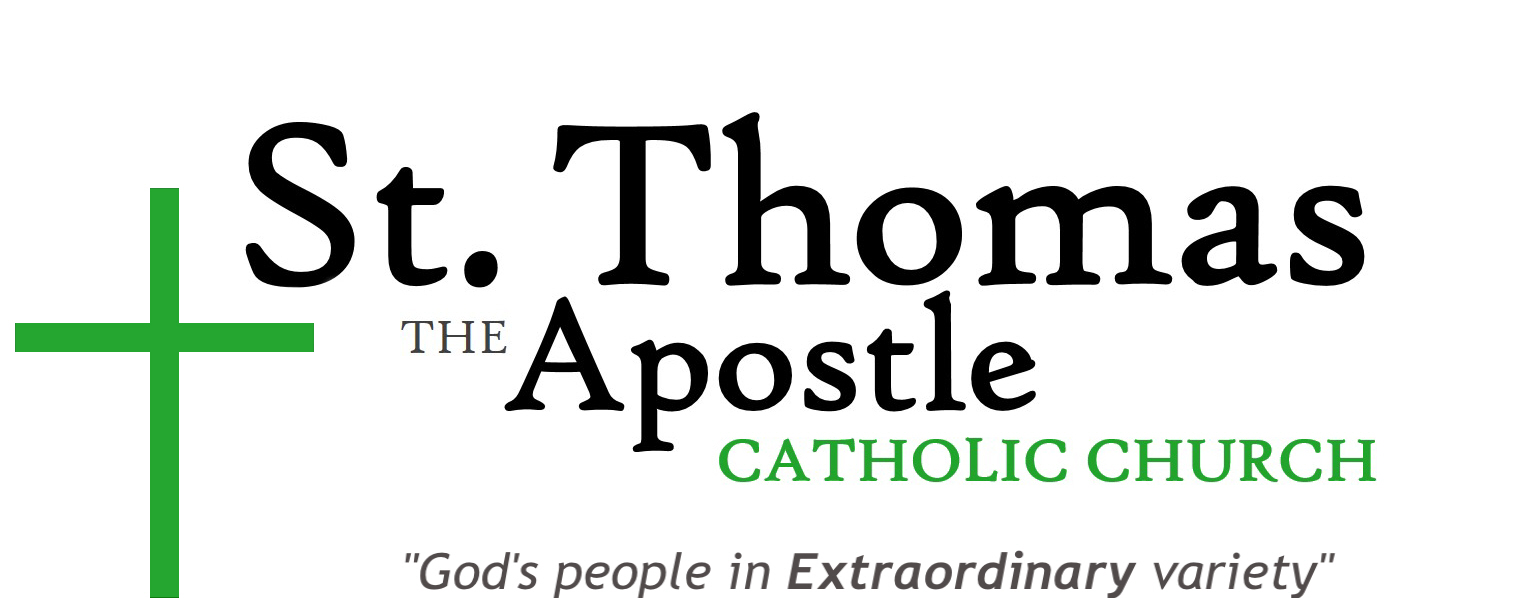From “Our Own Concern”, January 1930, pp. 5, 7, 9.
With the installation of two new windows: St. Isidore of Seville, donated by Mr. and Mrs. L. A. Downs and St. Bede of Jarrow, given by the Fitzpatrick family, the windows of the East nave are complete and add greatly to the richness of our church. Another window for the west nave has been donated and we anxiously are awaiting donors for the four remaining windows, so that the entire color effect may be produced.
The windows of St. Thomas were inspired by those of the thirteenth century. Those who have visited old European cathedrals frankly confess the fidelity of our windows in color and execution to their types. Stained glass is not one of the arts in which the method of production reveals itself at first glance. Our windows are not “painted glass.” The color effects are not produced by painting at all but by the window being built up of a multitude of small pieces of colored glass of which the artist must select the exact shades needed, cut them to shape and fit them together to form his design, using a separate piece of glass for every color or shade of color. When the window is finished these pieces are put together like a puzzle and joined by grooved strips of led soldered at the joints. Before this is done, however, the details of design or features, folds of drapery, patterns, etc., are painted on the glass in an opaque brownish enamel which when the glass is placed in a kiln and “fired” become part of the glass itself. This is the only painting involved in the production of a genuine stained glass window.
One of the interesting features of our windows is that because the figures, emblems and design are not obvious, it is necessary to search in order to find all that is in each window. In color, too, the windows have the characteristic of changing so that under various light conditions the effect is changed. At certain times of the day the blues and red will separate, sometimes one, sometimes the other will predominate. At other times when the light is more direct the colors will melt together producing a purple effect. Our windows are worthy of study.

St. Bede of Jarrow
The Venerable Bede is here represented in his episcopal vestments. A rich red chasuble, with a golden dalmatic, a white surplice, with an embroidered panel, showing three symbols of St. Bede: the scroll, the pitcher with light coming from above, and a shield with the letter “B”. In his hands he holds a shrine containing his many writings. The book-shrine is an adaptation of a type of early Celtic shrine found in many churches in Ireland. It is made of silver filigree with a crucifix of gold beside which stand St. John and the Blessed Mother. The shrine is enriched with jewels. On the top, in the architectural section, are two small figures depicting St. Joseph and St. Paul. The lower panel represents the baptism of Our Lord.
St. Isidore of Seville

The majestic figure of St. Isidore, Bishop, is vested in a green chasuble, embroidered with “silver Fleur de Lis. His crozier is a dove hiding her head in the mouth of a serpent.
Because of his many writings, he holds a book on which stands an ink-stand with a quill. The panel on the surplice has two angels holding a shield stamped with a beehive, one of St. Isidore’s emblems representing his industry. The two figures in the base represent St. Elizabeth of Hungary and St. Patrick.
